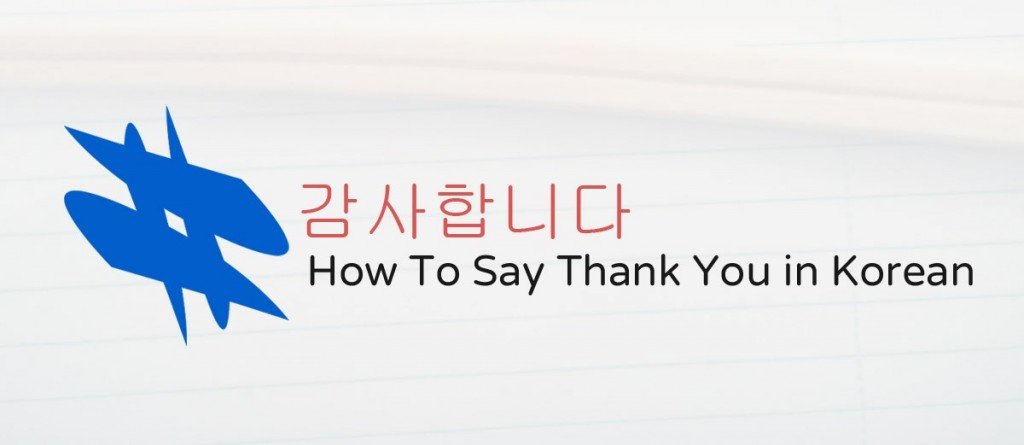Kamsahamnida – How To Say Thank You in Korean
Thank you in Korean
The most common way of saying thank you in Korean is “kamsahamnida” (Hangul: 감사합니다). If you are just travelling and looking for some survival phrases, that is pretty much all you need to know. But with that said, there is a lot more to know for those who are interested in learning about the Korean language and culture.
There is also another word, which means the same thing, komapseumnida (고맙습니다) and they can sometimes be used interchangeably (there is a difference you need to be aware of unless you are a beginner! Look below for more information). These two words can then be conjugated and can even be used in past tense! But don’t get too confused! Although not always perfectly natural, kam-sa-ham-ni-da (감사합니다) will always work and won’t confuse (nor insult!) anyone.
The dictionary forms of these words are as follow:
- kamsahamnida (감사합니다) – kamsahada (감사하다)
- komapseumnida (고맙습니다) – komapda (고맙다)
kamsahamnida (감사합니다)
This is the most common way to say thank you. You can use it in all situations without having to worry about insulting anyone.
komawo / komawoyo (고마워/고마워요)
ko-ma-wo (고마워) is often used casually and between close friends. You can use komawoyo (고마워요) semi-informally (like with people you’re not super close with but of similar status with) to people of the same age or even lower age if you don’t know them that well. To older people however, you should use 감사합니다 even though you might feel like it would be appropriate to use ko-ma-wo-yo (고마워요). This is because it still sounds a bit casual and informal even with the yo (요) ending.
kamsahamnida vs komapseumnida (감사하다 vs 고맙다)
As a beginner, you don’t really have to worry about the difference but if you’re still curious or happen to know some Korean already, you might want to check out this article about the difference between the two.
Why do Koreans sometimes say thank you in past tense?
This is intended for more advanced learners so keep that in mind.
What do Koreans mean when they say “감사했습니다” or “고마웠습니다”? Well, as you can probably guess, it refers to something that happened in the past. But what if I just lent you some money and you want to thank me? Does that count as something that happened in the past or in the present? Well, it’s not always clear and it is something one has to acquire a “feel” for. But there is a way to think about it! It sort of sounds like something is over or finished, or that you or the other person is leaving. So if you are thanking someone for something that’s still going on you would use the present tense. Borrowing money from someone is still an ongoing process and not “finished” until you pay it back. So if you borrow money from me, you would just say “감사합니다” when I hand it to you. However, when you give it back you would say “고마웠습니다.”
Or what if you spent the summer living at your parents-in-law’s house and now you’re leaving? At that time, you would say “그동안 감사했습니다” because you are leaving and thanking them for something that has come to an end.
Do I need to bow when thanking someone?
- If you are a turist – Not really. Mainly because you are a foreigner and most Korean won’t expect that from you unless you’ve lived there for a long time and can speak fluent Korean. But do it anyway! Some people are not as open-minded.
- In most cases – It depends! But if you want to make a good impression and don’t know when to bow and when not to, it’s better to do it but don’t overdo it unless the person is old or of “higher status.” In most cases, what you can do is just bow slightly, almost like nodding your head. If you’re receiving a gift from someone, recieve it with both of your hands and bow a little more than you normally would. Again, all situations are different and it takes a long time to learn all the customs and manners. But at least this way, they will know that you are trying
- So long story short, it’s better to bow if you are unsure!





